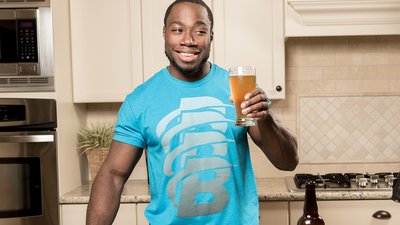Alcohol use—as a well-established part of human culture—is something that has become almost as acceptable as eating and breathing. As a social facilitator and feel good drug of choice for many, alcohol is very popular indeed, with consumption at mass levels.
However, alcohols well-documented deleterious effects—diminished performance, mental impairment, possible addiction, diabetes and liver disease to varying degrees in certain individuals—could be seen as a good reason to steer clear of it.
This being said, many people enjoy its sedating influence and it does play a vital role in many of society's traditions and practices. One effect alcohol has, which is not widely discussed, is its impact on body composition. In its purest form, ethyl alcohol, which supplies seven calories per gram, alcohol provides energy, bumping up ones total energy balance whenever it is consumed.
Unlike macronutrients such as carbohydrates, proteins and fats, alcohol supplies what nutritionists often refer to as empty calories: calories without nutrition. To make matters worse, it is the first fuel to be used when combined with carbohydrates, fats and proteins, postponing the fat-burning process and contributing to greater fat storage.
Here is what diet guru Robert C. Atkins says regarding alcohols affect on fat storage:
"Here's the problem with all alcoholic beverages, and the reason I recommend refraining from alcohol consumption on the diet. Alcohol, whenever taken in, is the first fuel to burn. While that's going on, your body will not burn fat. This does not stop the weight loss, it simply postpones it, since the alcohol does not store as glycogen, and you immediately go back into ketosis/lipolysis after the alcohol is used up.
If you must drink alcohol, wine is an acceptable addition to levels beyond the Induction diet. If wine does not suit your taste, straight liquor such as scotch, rye, vodka, and gin would be appropriate, as long as the mixer is sugarless; this means no juice, tonic water; or non-diet soda. Seltzer and diet soda are appropriate."
Although Mr. Atkins suggestions are valid ones, especially as he is advocating the elimination of additional sugars along with the higher calorie beers, any form of alcohol can pose problems for those wanting to shed unwanted fat to look their best.
Main concerns are as follows:
1. Alcohol Supplies Almost Twice As Many Calories As Protein And Carbs
At seven calories per gram, alcohol supplies almost twice as many as protein and carbohydrates. In fact, alcohol has only two fewer calories than fat, which has nine per gram. It must also be remembered that the calories in alcohol lack the nutrients beneficial for a healthy metabolism and will therefore hasten fat storage.
The calories found in the average alcoholic drink are quite concentrated compared to many foods, and this actually causes one to inadvertently take in many more calories than would otherwise be consumed. Alcohol is quite deceptive in that it passes through the system rapidly, often before the drinker is aware of the number of drinks they have had.
Alcoholic drinks also contain calories from other sources, which add to overall caloric intake. Certain cocktails, for example, contain fats. Wine and beer both have high carbohydrate content. Although the affects these various calorie types have on the body are different—carbohydrates release insulin, which can hasten fat storage, while fats will be stored directly in the fat cells—the overall result is added body fat.
An example of how many calories can be easily consumed can be seen with a small glass of wine: a 5-ounce glass of wine will typically contain 110 calories, 91 of which come from the alcohol itself (13 grams), with the remaining five grams coming from carbohydrates.
Beer contains more carbohydrates (although many of the "Lite" beers have a carb content similar to a glass of wine) and less alcohol than wine, but is seen as being more fattening, due to its higher energy content.
2. Alcohol Loosens The Inhibitions
While drinking, people usually will not stop to consider the impact alcohol is having on their bodies; such is alcohol's affect on loosening the inhibitions. The result of this relaxed thinking could mean more calories consumed and extra body fat gains. Those drinking might also eat more of the wrong kinds of food, without thinking of the consequences.
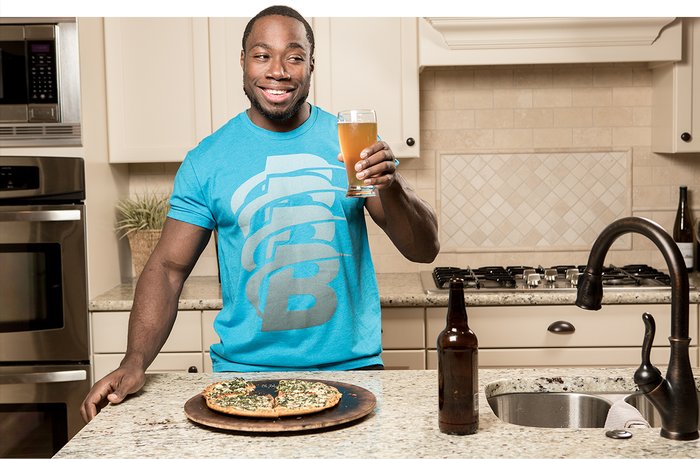
Those drinking might also eat more of the wrong kinds of food, without thinking of the consequences.
Alcohol tends to have an appetite stimulating effect as it provides little in the way of nutrition, leaving a craving for other foods at the time of consumption. Add this to the fact that fatty and salty foods tend to accompany most occasions featuring alcohol (as well as alcohol actually stimulating one's appetite for these kinds of foods), and the general loosening of resolve that goes with an inebriated mindset, and you have a recipe for excess fat gain. Alcohol has also been shown to affect motivation, making a healthy diet harder to stay on while it is being used.
3. Alcohol Can Damage The Stomach, Kidneys, And Liver
Given alcohol is a by-product of yeast digestion; it can have an irritating effect on the lining of the stomach and gradually weaken the kidneys and liver, leading to serious health problems—even death in certain instances. Any weakening of the stomach will lessen the rate and efficiency at which food is digested, which ultimately interferes with a healthy metabolism and the weight loss process.
The liver—which processes toxins and breaks down fats for fuel—is crucial when it comes to maintaining a healthy body composition. Alcohol is at its most destructive during the liver's detoxification process.
4. Alcohol Lowers Testosterone
Testosterone, which has a powerful fat loss effect, is reduced whenever alcohol is consumed, thus halting its full potential as a fat burner. Also, testosterone as an anabolic hormone, contributes to gains in lean muscle mass. Lowered testosterone means fewer muscle gains, and less muscle means a lowered metabolic rate.
A lower metabolic rate will make the job of losing fat all the more harder. This is what governs the way we use energy. Those with a higher metabolic rate will burn more calories at rest. By interfering with testosterone production, alcohol indirectly causes the body to lower its metabolic rate (and thus the rate at which it uses energy) and directly prohibits testosterone from exerting its powerful fat-burning effects.
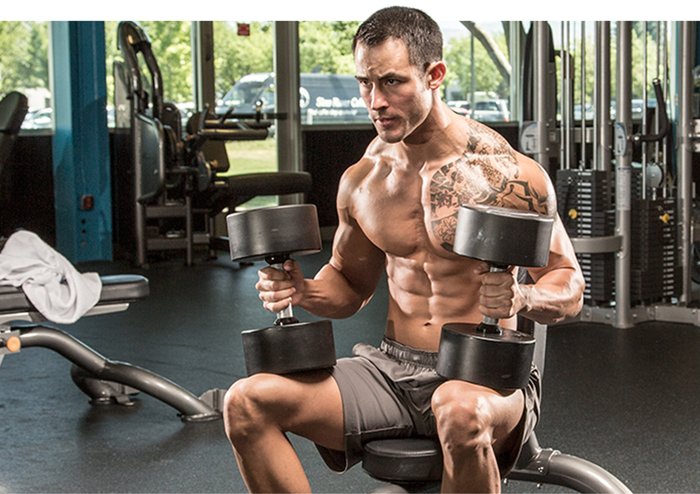
Lowered testosterone means fewer muscle gains, and less muscle means a lowered metabolic rate
5. Alcohol Increases Appetite
Touched on briefly in point two, alcohol can increase appetite, making the combination of alcohol and a fattening meal all the more worse. A Canadian study showed that alcohol consumed before a meal increased caloric intake to a far greater extent than did a carbohydrate drink. Also, researchers from Denmark's Royal Veterinary and Agricultural University showed that if a group of men were given a meal and allowed to eat as much as they wanted, alcohol, rather than a soft drink, would increase the amount of food consumed.
How Is Alcohol Processed In The Body?
To gain an understanding of why alcohol affects us the way it does, it is important to known how it is processed in the body.
After consuming the first alcoholic drink, 25% of this alcohol is absorbed straight from the stomach into the bloodstream, with the remainder taken in through the small bowel. Alcohol is generally absorbed fairly rapidly, but its absorption can be quickened depending on several factors:
- The amount of food in the stomach (a fuller stomach slows the rate of absorption).
- Whether the drink is carbonated (champagne is absorbed more quickly than non-sparkling drinks).
- Alcohol concentration of the drink (higher alcohol drinks are absorbed faster).
Around 98% of alcohol that is consumed is processed in the liver, with the other two to ten percent being expelled through urine, breathing, or sweat. The amount of alcohol in a standard drink will take around 10 hours for the average person to process, which means the more that is consumed at any one point, the greater the rise in blood alcohol content. When the liver processes alcohol, it does so in one of two ways.
For the most part, alcohol is broken down by the enzyme alcohol dehydrogenase (ADH, which is contained in the liver cells). ADH then metabolizes the alcohol into acetaldehyde. Acetaldehyde is broken down into acetate by another enzyme, aldehyde dehydrogenase. In the final stage, the acetate is further metabolized to where it eventually exits the body as waste products carbon dioxide and water.
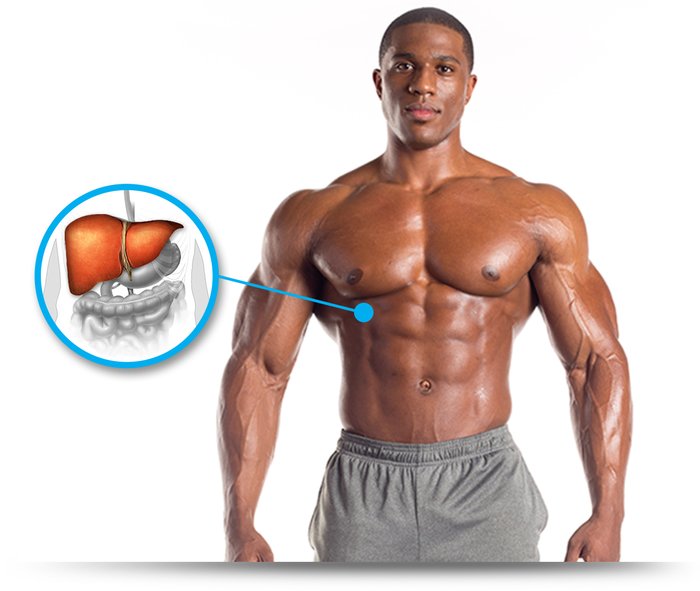
Around 98% of alcohol that is consumed is processed in the liver.
The other way alcohol can be processed is a less common alternative, which uses a different set of liver enzymes. This alternative pathway, called the microsomal ethanol-oxidizing system, is used when the blood has very high levels of alcohol.
Calorie And Nutrient Content Of Popular Alcohol Drinks
The alcohol content of our most popular beverages varies, so it is important to know exactly what percentage of alcohol is in any given drink if one is wanting to limit all the empty calories. The following percentages are usually contained in each standard drink—five ounces of wine, 12 ounces of beer or 1.5 ounces of 80 proof (40% alcohol) distilled liquor.
- Beer: 5% alcohol
- Wine: 12% alcohol
- 100 proof liquor: 50% alcohol
- 80 proof liquor: 40% alcohol
The caloric content and nutrient breakdown of several popular alcohol choices follows.
Beer
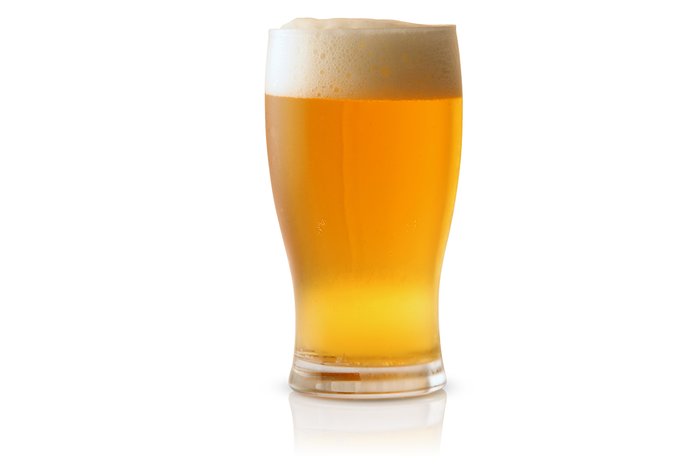
One Can Of Regular 4-5% Alcohol Beer Contains:
- 14 milligrams of sodium (1%).
- 12.6 grams of carbohydrates (4%).
- 1.6 grams of protein.
- 14.2 milligrams of calcium.
- 96.1 grams of potassium.
- Total Calories: 153 (includes 97 calories from alcohol).
One Can Of Low Alcohol (2.3% Alcohol) Beer Contains:
- 34.7grams of carbohydrates (12%).
- Total Calories: 139.
One Can Of Lite Beer Contains:
- 14 milligrams of sodium.
- 5.9 grams of carbohydrates.
- 0.98 grams of proteins.
- 14.4 milligrams of calcium.
- 75.6 milligrams of potassium.
- Total Calories: 105 (includes 78 calories from alcohol).
Wine
One Glass Of Champagne Contains:
- 2 grams of carbohydrates.
- Total Calories: 85 (includes 77 calories from alcohol).
One Glass Of Dessert Wine (Sweet) Contains:
- 9 milligrams of sodium.
- 14.1 grams of carbohydrates.
- 0.1 milligrams of calcium.
- 0.9 milligrams of potassium.
- Total Calories: 165 (includes 110 calories from alcohol).
One Glass Of Reduced Alcohol (6%) Wine Contains:
- 10 milligrams of sodium.
- 13.3 milligrams of calcium.
- 130.2 milligrams of potassium.
- 1.7 grams of carbohydrate.
- Total Calories: 74 (including 66 calories from alcohol).
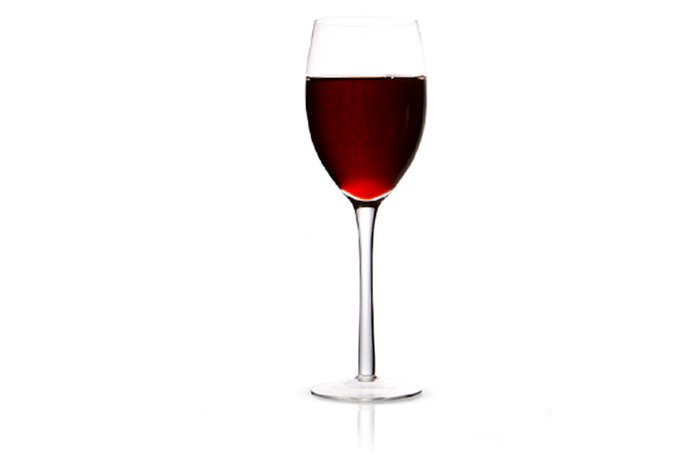
One Glass Of Red Wine (Claret) Contains:
- 4.4 grams of carbohydrate.
- 0.1 grams of protein.
- Total Calories: 123 (including 105 calories from alcohol).
One Glass Of Table Wine Contains:
- 7 milligrams of sodium.
- 4 grams of carbohydrate.
- 0.1 grams of protein.
- 11.8 milligrams of calcium.
- 146.5 milligrams of potassium.
- Total Calories: 124 (including 108 from alcohol)/
One Glass Of White Wine (Riesling, Chablis) Contains:
- 5.5 grams of carbohydrate.
- 0.1 grams of protein.
- Total Calories: 120 (including 98 calories from alcohol).
One Glass Of White Sparkling Wine Contains:
- 4 grams of carbohydrates (all of white are sugars).
- Total Calories: 93 (including 77 calories from alcohol)
Liquors
One Ounce Of Gin (40% Alcohol) Contains:
- 0.6 milligrams of potassium.
- Total Calories: 64 from alcohol content.
One Ounce Of Rum (40% Alcohol) Contains:
- 0.6 grams of potassium.
- Total Calories: 64 from alcohol content.
One Ounce Of Vodka (40% Alcohol) Contains:
- 0.6 milligrams of potassium.
- Total Calories: 64 from alcohol content.
One Ounce Of Whiskey (40% Alcohol Contains):
- 0.6 milligrams of potassium.
- Total Calories: 64 from alcohol content.
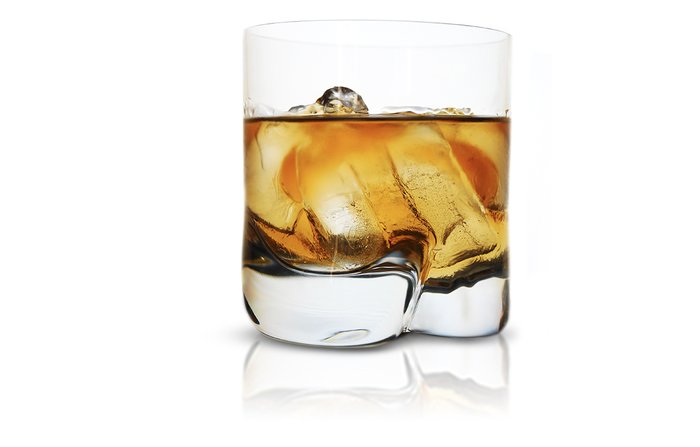
Liqueurs
One Nip Of Baileys Irish Cream Contains:
- 5.8 grams of fat (3.5 grams of this saturated fat).
- 14 milligrams of cholesterol.
- 33 milligrams of sodium.
- 7.4 grams of carbohydrate.
- 1.2 grams of protein.
- Total Calories: 121 (including 35 from alcohol).
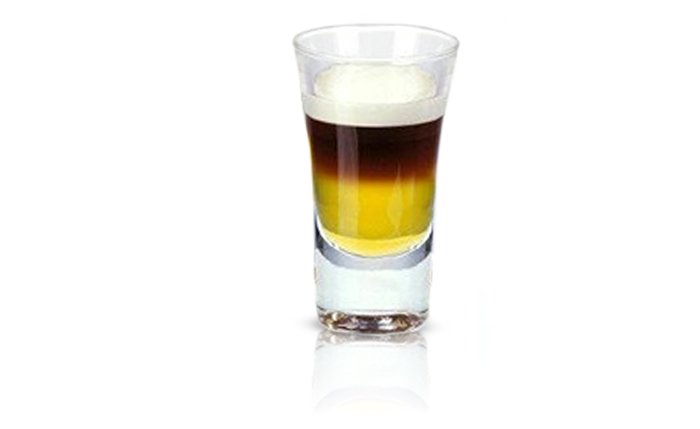
One Nip Of Ouzo (40% Alcohol) Contains:
- 11 grams of carbohydrate (10.9 of this is sugar).
- Total Calories: 103 (including 70 from alcohol).
One Nip Of Schnapps (40% Alcohol) Contains:
- 7 grams of carbohydrate.
- Total Calories: 100 (including 70 from alcohol).
One Nip Of Curacao (35% Alcohol) Contains:
- 6 grams of carbohydrate.
- Total Calories: 95 (including 56 from alcohol).
One Nip Of Amaretto (38% Alcohol) Contains:
- 17 grams of carbohydrate.
- Total Calories: 110 (including 42 from alcohol).
One Nip Of Coffee Liqueur Contains:
- 3 milligrams of sodium.
- 11.2 grams of carbohydrate (all sugars).
- 0.3 milligrams of calcium.
- 10.4 milligrams of potassium.
- Total Calories: 107 (including 63 from alcohol).
What Are The Best Alcohol Choices
If you really have to drink, what are the best choices? Some lower calorie brands to hit the market are showing promise, as are some of the more traditional alternatives.
As shown above, total caloric content of various alcoholic drinks varies, with beer generally containing the highest number, considering the smaller amount of alcohol found in this drink compared with others. Various spirits (also known as liquor) generally contain around 64 calories per nip, but these do add up depending on the strength of the drink (for example, a double will contain two nips, or 128 calories).
Combine this with one glass of coke (around 180 calories, 95% of these from sugars) and your typical bourbon and coke could supply 308 calories—double the number found in the average can of beer. Wine generally contains around 100 to 125 calories per medium sized glass. It also contains more alcohol than beer given the same volume, making it a better choice calorie-wise, as less would be consumed at any one sitting.
Liqueurs, although usually around 100 calories per nip, are often consumed with other, often-higher calorie mixers such as coke or milk to make cocktails, bumping the calorie content way up. Baileys Irish Creme, one of the highest calorie alcohols, contains 121 calories per nip, with a comparatively low alcohol content (17% compared to around 25-35 for most liqueurs). It is usually consumed 2-3 nips at a time given its lower alcohol strength. It is definitely one worth avoiding if weight loss is the aim.

Drink alcohol with a lower caloric value, and a higher alcohol percentage (like wine for example). Less will be consumed, meaning lower overall calorie consumption.
The worst alcohol choices would be the cream based drinks such as eggnog (340 calories without the alcohol) and an Amaretto Sour (includes tequila and orange juice and contains 421 calories). The highest calorie cocktail of the all would be the Vodka Mudslide, which contains coffee liqueur, Irish cream and vanilla ice cream and supplies 820 calories.
It would be better to drink a smaller quantity of liqueur with a healthier, lower calorie base such as trim milk or tomato juice (the latter being the base for a Bloody Mary cocktail).
Given alcohol taste is an individual matter, and people will usually choose what they like, rather than what they are advised to consume based on the health content of the drink, it is no easy task trying to persuade someone to change their drinking habits. The above information can however be used by one who is wanting to make some physical changes by lowering the overall caloric content of what they drink.
Some more general guidelines follow:
Drink alcohol with a lower caloric value, and a higher alcohol percentage (like wine for example). Less will be consumed, meaning lower overall calorie consumption.
Avoid high-calorie liqueurs. These are extremely deceptive (they taste so good) and will add enormously to overall caloric content.
Keep healthy food on hand when drinking. As mentioned, drinking will relax the inhibitions and cause one to compromise their nutritional habits.
If drinking beer, try a lower calorie alternative. Also, drink diet sodas with various spirits to significantly lower the calorie content of these drinks.
Drink water between alcoholic drinks. This will increase feelings of fullness and may help to prevent over consumption of alcohol.
Conclusion
So what is one to do? Given alcohol plays a large role in celebration and social cohesion, can one completely refrain from its use? It really depends on the goals a person has. Most could probably consume moderate levels of alcohol (two or three standard drinks three to four times per week) without any problem.
Larger amounts (more than seven drinks at any one time), often described as binge drinking, can cause major problems and probably should not be advocated. Maintaining reasonable levels of health, while enjoying a few drinks—using moderation as the key—should be no problem. However, athletes—who definitely are not your average population—wanting to improve performance, and those wanting to lose weight are a different issue entirely.
Alcohol, as shown, will negate any efforts to lose body fat and will alter performance for the worst. The best advice would be to totally abstain until performance and weight loss goals are obtained.
Ray Audette, author of the NeanderThin Diet, provides sound advice for anyone wanting to lose weight while drinking alcohol. Remember, to be at your best physically you can't have it both ways and Mr Audette provides a good rationale as to why.
"Don't Drink Alcohol[.] It is best not to consume alcohol in any amount from any source. Alcohol is a by-product of yeast digestion (the yeast equivalent of urine) and is known to damage the stomach, kidneys, and liver. Alcohol adds fat principally by producing cravings for both it and other carbohydrates (see snack trays at any bar) and even other addictive substances (ask any former smoker.) It is almost impossible to drink alcohol and follow the hunter-gatherer lifestyle. If you must drink, do so only on special occasions (once or twice a year) and stick to alcohols derived from fruit (wine and champagne.)"
References
- Buemann, B., Toubro, S., & Astrup, A. (2002). The effect of wine or beer versus a carbonated soft drink, served at a meal, on ad libitum energy intake. International Journal of Obesity and Related Metabolic Disorders, 26, 1367-1372.
- Borushek, A. (2006). CalorieKing alcohol information.
- Shape Fit. (2006). How alcohol effects your weight loss—alcohol calories and fat. [Online]
- Tremblay, A., & St-Pierre, S. (1996). The hyperphagic effect of a high-fat diet and alcohol intake persists after control for energy density. American Journal of Clinical Nutrition, 63, 479-482.

